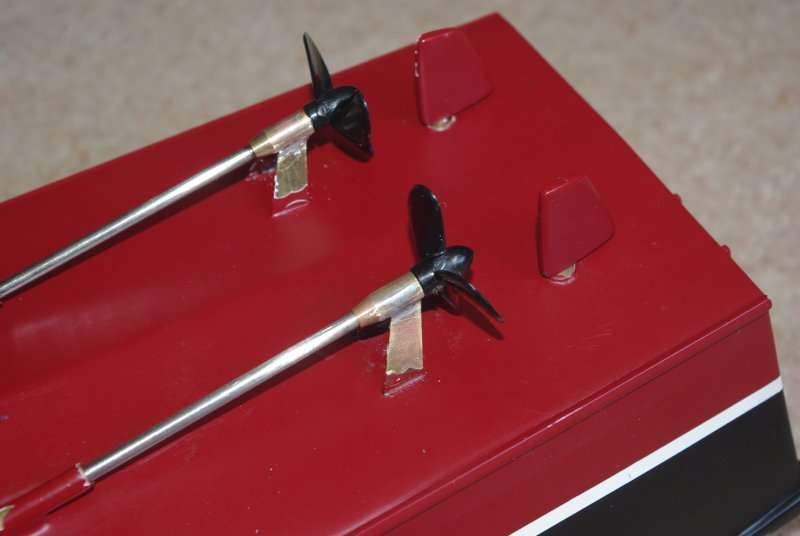I've always understood that the purpose of the P Bracket, or whatever they're called, was to transmit the thrust of the prop through to the hull structure, but a recent attempted refurbishment of a Nautix RAF Hants & Dorset launch has caused me to question this.
Both shafts of the model were quite stiff, and it wasn't the fastest boat on the lake by any means as well as sounding 'strained', so I stripped it all down. BOTH shafts were bent, and neither lined up with the holes in the P Brackets, one shaft by over half its diameter! No wonder they were bent, pretty poor assembly to my mind.
Having sorted this out by sawing off the tubes of the P Brackets and filing and re-soldering them in position with the straightened shafts locating them, it all ran a lot sweeter, without the props in place......
With the props screwed on, and located up against the P Brackets, as I thought they should be, the noise when running was HORRENDOUS, and neither motor-shaft-prop assembly seemed to run smoothly. Investigation showed that the props had the manufacturer's name moulded into the rear face of the moulding, and when this rubbed against the P Bracket the noise and vibration were generated, obviously not a good thing.
I can only conclude that it was designed so the thrust of the prop was transmitted up the shaft, through the flexible coupling, along the motor's shaft and sent to the hull via the front bearing of the motor!

Hardly a good idea I'd have thought.
I intend to file/cut/sand off the moulded script and fit a thrust washer so the props put their power through to the P Bracket, but I'd be pleased if anyone has any better ideas.

 Author
Topic: P bracket purpose (Read 6790 times)
Author
Topic: P bracket purpose (Read 6790 times)



